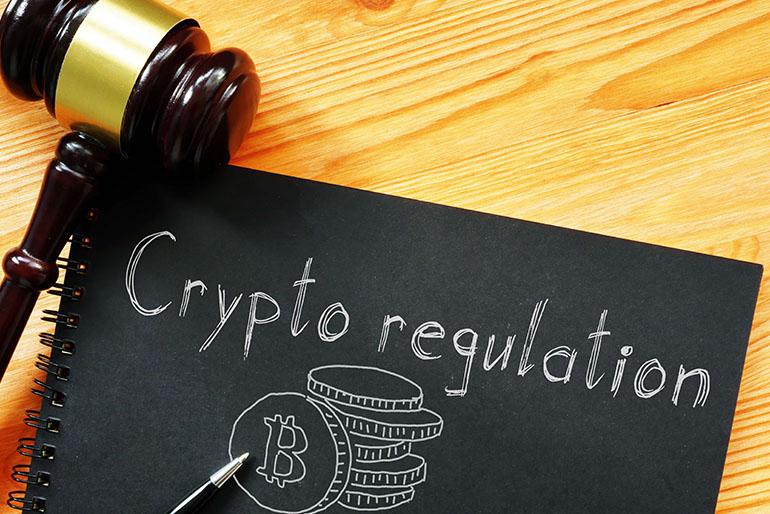Cryptocurrencies, a groundbreaking innovation, have transformed the financial landscape, offering a decentralized alternative to traditional currencies. However, with great innovation comes the need for regulatory oversight. Governments worldwide are navigating the complex terrain of cryptocurrency regulations to strike a balance between fostering innovation and ensuring financial stability.
Contents
- 0.1 Table of Contents
- 0.2 I. Introduction
- 0.3 II. Historical Context
- 0.4 III. Global Perspectives
- 0.5 IV. Regulatory Challenges
- 0.6 V. Key Regulatory Players
- 0.7 VI. Industry Response
- 0.8 VII. Impact on Cryptocurrency Market
- 0.9 VIII. Future Outlook
- 0.10 IX. Balancing Act: Innovation vs. Regulation
- 0.11 X. Case Studies
- 0.12 XI. Educational Initiatives
- 0.13 XII. Regulatory Compliance for Businesses
- 0.14 XIII. Prospects for Decentralized Finance (DeFi)
- 0.15 XIV. A Glimpse into the Future
- 0.16 XV. Conclusion
- 1 FAQs
Table of Contents
I. Introduction
A. Definition of Cryptocurrency Regulations
Cryptocurrency regulations encompass a set of rules governing the creation, trading, and usage of digital assets. These regulations aim to establish a framework that ensures the responsible and secure adoption of cryptocurrencies.
B. Significance of Regulatory Measures
The significance of regulatory measures lies in addressing concerns related to fraud, money laundering, and market manipulation. Additionally, regulations provide a level of confidence for investors and facilitate the integration of cryptocurrencies into the mainstream financial system.
II. Historical Context
A. Evolution of Cryptocurrencies
To understand the current regulatory landscape, a brief overview of the evolution of cryptocurrencies is necessary. From the emergence of Bitcoin to the proliferation of altcoins, each phase has presented unique challenges for regulators.
B. Early Regulatory Attempts
Governments initially grappled with the novel nature of cryptocurrencies, leading to varied and sometimes conflicting regulatory attempts. These early efforts set the stage for the comprehensive frameworks in place today.
III. Global Perspectives
A. Diverse Approaches Across Countries
1. Stringent Regulations
Some countries have opted for stringent regulations to mitigate risks associated with cryptocurrencies. These measures often include strict KYC (Know Your Customer) and AML (Anti-Money Laundering) procedures.
2. Supportive Policies
Conversely, certain nations have embraced cryptocurrencies, viewing them as a catalyst for economic growth. Supportive policies aim to foster innovation while providing a clear legal framework.
3. Adaptive Strategies
Several countries employ adaptive strategies, adjusting regulations as the cryptocurrency landscape evolves. This approach acknowledges the dynamic nature of the industry.
IV. Regulatory Challenges
A. Technological Complexity
The decentralized and evolving nature of cryptocurrencies poses challenges for regulators. Technological complexities, such as smart contracts and blockchain governance, require nuanced regulatory responses.
B. Cross-Border Considerations
Cryptocurrencies transcend geographical boundaries, demanding a collaborative approach among nations. Cross-border considerations add a layer of complexity to regulatory efforts.
V. Key Regulatory Players
A. United States
The U.S. has emerged as a key player in shaping cryptocurrency regulations. Regulatory agencies like the SEC (Securities and Exchange Commission) play a crucial role in overseeing the market.
B. European Union
The EU has adopted a comprehensive approach, recognizing the need for standardized regulations across member states. Initiatives like MiCA (Markets in Crypto Assets) aim to establish a unified framework.
C. Asian Regulatory Landscape
Asia showcases a diverse regulatory landscape, with countries like Japan embracing cryptocurrencies and others imposing bans. The regulatory stance significantly influences the regional cryptocurrency market.
VI. Industry Response
A. Collaboration with Regulators
To address regulatory concerns, the cryptocurrency industry has increasingly engaged in constructive dialogues with regulators. Collaborative efforts aim to find common ground and build trust.
B. Self-Regulation Initiatives
Recognizing the need for proactive measures, the industry has initiated self-regulation efforts. These initiatives demonstrate a commitment to responsible practices and often influence regulatory decisions.
VII. Impact on Cryptocurrency Market
A. Market Volatility
Regulatory announcements often trigger market volatility, showcasing the sensitivity of the cryptocurrency market to regulatory developments. Understanding this dynamic is crucial for investors.
B. Investor Confidence
Clear and well-defined regulations contribute to investor confidence. The lack of regulatory clarity, on the other hand, may deter institutional investors from entering the cryptocurrency space.
VIII. Future Outlook
A. Trends in Regulatory Evolution
The regulatory landscape is dynamic, with ongoing trends shaping the future. Evolving regulations will likely address emerging challenges, providing a more robust framework.
B. Potential International Collaboration
As the global nature of cryptocurrencies becomes more apparent, the potential for international collaboration in crafting regulatory standards gains importance. Harmonizing regulations can foster a more cohesive ecosystem.
IX. Balancing Act: Innovation vs. Regulation
A. Fostering Innovation
Regulations should strike a balance, fostering innovation while safeguarding against risks. Creating an environment that encourages technological advancements is crucial for the industry’s growth.
B. Ensuring Consumer Protection
Simultaneously, regulations must prioritize consumer protection. Safeguards against fraud, scams, and market manipulation are essential to build trust in the broader community.
X. Case Studies
A. Regulatory Success Stories
Examining countries with successful regulatory frameworks provides valuable insights. Understanding what works can guide other nations in formulating effective regulations.
B. Lessons from Regulatory Failures
Learning from regulatory failures is equally important. Identifying pitfalls and challenges helps refine regulatory approaches for a more resilient system.
XI. Educational Initiatives
A. Enhancing Public Understanding
Public understanding of cryptocurrencies and their regulations is crucial. Educational initiatives can demystify the complex world of digital assets, fostering informed decision-making.
B. Promoting Responsible Cryptocurrency Use
Regulators and industry players should collaborate to promote responsible cryptocurrency use. Guidelines for users and businesses can contribute to a safer and more sustainable ecosystem.
XII. Regulatory Compliance for Businesses
A. Implications for Companies
Businesses operating in the cryptocurrency space face unique challenges. Understanding and navigating regulatory compliance is essential for long-term sustainability.
Guidance on navigating compliance challenges empowers businesses to operate within the legal framework. This includes adapting to evolving regulations and staying ahead of potential changes.
XIII. Prospects for Decentralized Finance (DeFi)
A. Regulatory Dilemmas in the DeFi Space
Decentralized Finance (DeFi) introduces new challenges for regulators. The evolving nature of DeFi requires a thoughtful and adaptive regulatory approach.
B. Necessity for DeFi Guidelines
Establishing guidelines for the DeFi space is crucial. Regulatory clarity can encourage innovation in decentralized finance while mitigating potential risks.
XIV. A Glimpse into the Future
A. Emerging Technologies
The future of cryptocurrency regulations intersects with emerging technologies. The rise of blockchain innovations and tokenization will necessitate agile regulatory responses.
B. Regulatory Innovations
Regulators themselves are innovating. Exploring regulatory innovations, such as sandboxes and pilot programs, showcases a willingness to adapt to the changing landscape.
XV. Conclusion
A. Recap of Regulatory Landscape
In conclusion, the global regulatory landscape for cryptocurrencies is diverse and continually evolving. Striking a balance between innovation and regulation is crucial for the industry’s sustained growth.
B. Ongoing Evolution and Challenges
As the cryptocurrency space matures, the ongoing evolution of regulations will bring both opportunities and challenges. Adapting to technological advancements while addressing regulatory complexities will be key.

FAQs
- How do cryptocurrency regulations impact market volatility?
- Regulatory announcements can trigger fluctuations in the cryptocurrency market, influencing investor behavior.
- Why is international collaboration essential for cryptocurrency regulations?
- The global nature of cryptocurrencies requires harmonized regulations to create a cohesive and stable ecosystem.
- What role does the cryptocurrency industry play in shaping regulations?
- The industry engages in collaborative efforts and self-regulation initiatives to address regulatory concerns.
- How can businesses navigate regulatory compliance in the cryptocurrency space?
- Understanding and adapting to evolving regulations is essential for businesses to navigate compliance challenges.
- What are the prospects and challenges of decentralized finance (DeFi) regulations?
- DeFi introduces new challenges, and establishing clear guidelines is crucial for responsible innovation.
This comprehensive exploration sheds light on the intricate world of cryptocurrency regulations, offering insights into the past, present, and future of how governments worldwide approach digital assets.



